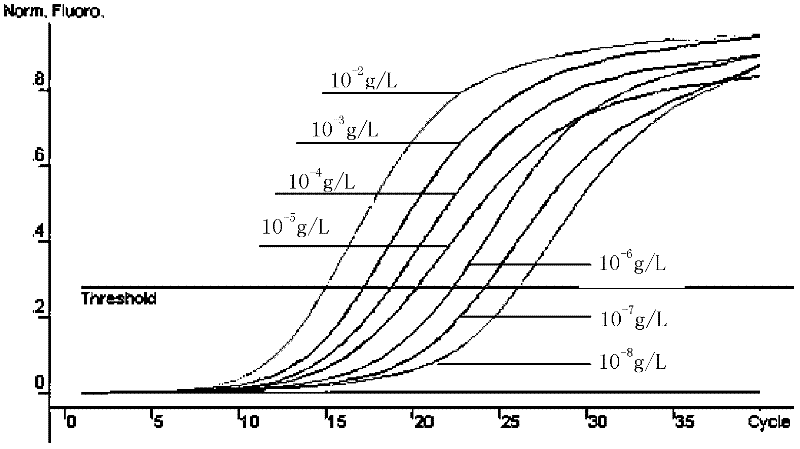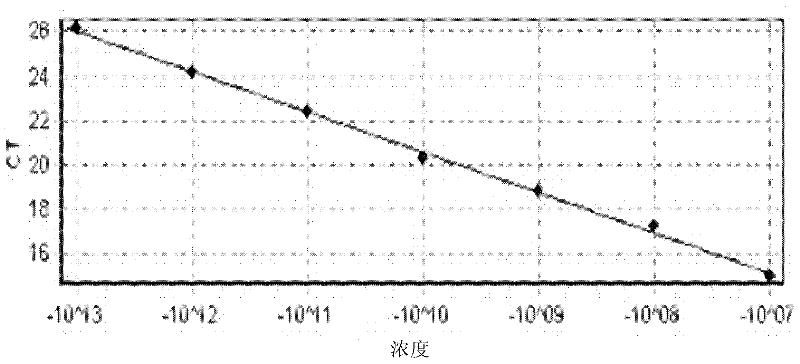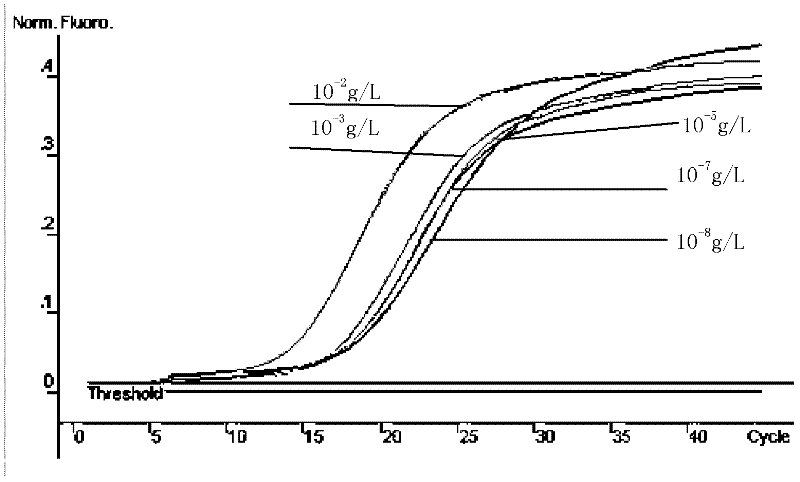Method for detecting phthalic acid esters (PAEs) with molecular beacon fluorescence quantitative PCR
A phthalate ester and molecular beacon technology, which is applied in the direction of fluorescence/phosphorescence, microbial measurement/inspection, biochemical equipment and methods, etc., can solve the problems of cumbersome, lengthy, expensive and time-consuming analysis process, and improve the accuracy And the effect of sensitivity, low detection limit and strong specificity
- Summary
- Abstract
- Description
- Claims
- Application Information
AI Technical Summary
Problems solved by technology
Method used
Image
Examples
Embodiment 1
[0028] 1. Extraction of estrogen receptor and preparation of ligand-receptor complex
[0029] 1. Extraction of estrogen receptor-containing cytosol
[0030] Get the carp domesticated in the water that is 0.01mg / L of phthalate concentration, anesthetize with benzocaine of 5mg / L. Take the liver, wash off the blood outside the liver with 0.15mol / L KCl solution pre-cooled on ice, then blot the surface water with sterilized filter paper, and add HEDG buffer (pre-cooled on ice) was homogenized in a glass homogenizer. The homogenate was centrifuged at 15,000g for one hour, and the supernatant was carefully drawn, which was the cytosol containing receptors, and stored at -80°C after aliquoting.
[0031] 2. Preparation and purification of phthalate-estrogen receptor complex
[0032] Dilute 1g / L of phthalates to 10 -1 g / L-10 -9 g / L, take 10 μL each, add 250 μL of cytosol, and incubate at 20°C for 2 hours with shaking. When the ligand-receptor reaction is over, add 0.2mL of 60% HAP...
PUM
 Login to View More
Login to View More Abstract
Description
Claims
Application Information
 Login to View More
Login to View More - R&D
- Intellectual Property
- Life Sciences
- Materials
- Tech Scout
- Unparalleled Data Quality
- Higher Quality Content
- 60% Fewer Hallucinations
Browse by: Latest US Patents, China's latest patents, Technical Efficacy Thesaurus, Application Domain, Technology Topic, Popular Technical Reports.
© 2025 PatSnap. All rights reserved.Legal|Privacy policy|Modern Slavery Act Transparency Statement|Sitemap|About US| Contact US: help@patsnap.com



